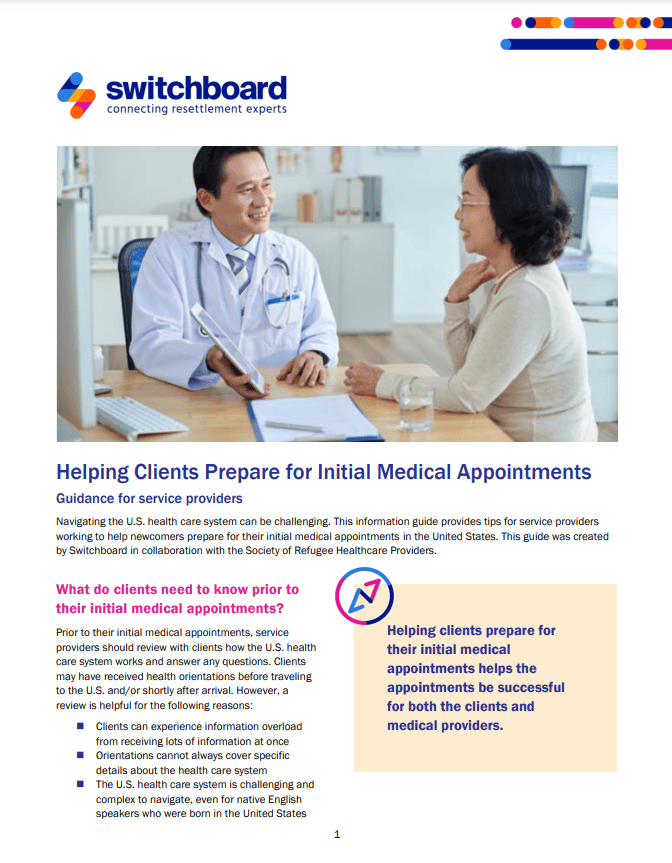Navigating the U.S. health care system can be challenging. This information guide provides tips for service providers working to help newcomers prepare for their initial medical appointments in the United States. This guide was created by Switchboard in collaboration with the Society of Refugee Healthcare Providers.







